Cyrus Dallin Part Two
Cyrus Dallin was born in 1861 in Springville, Utah Territory, a small Mormon settlement in the shadows of the Wasatch Mountains. Dallin’s talent for sculpting was recognized at an early age. In 1880, at the age of nineteen, he moved to Boston to study with sculptor Truman H. Bartlett. As a hub of art and culture, Boston offered many opportunities for an aspiring sculptor, and it was natural that Dallin would put down roots there.1
Just a few years into his studies, the youthful twenty-two year old shocked the Boston art scene when he entered and won a city-sponsored competition for a monument to Paul Revere. Despite this early success, it would take Dallin fifty-seven years and seven different models before the monument would be erected in Boston’s North End in 1940.1
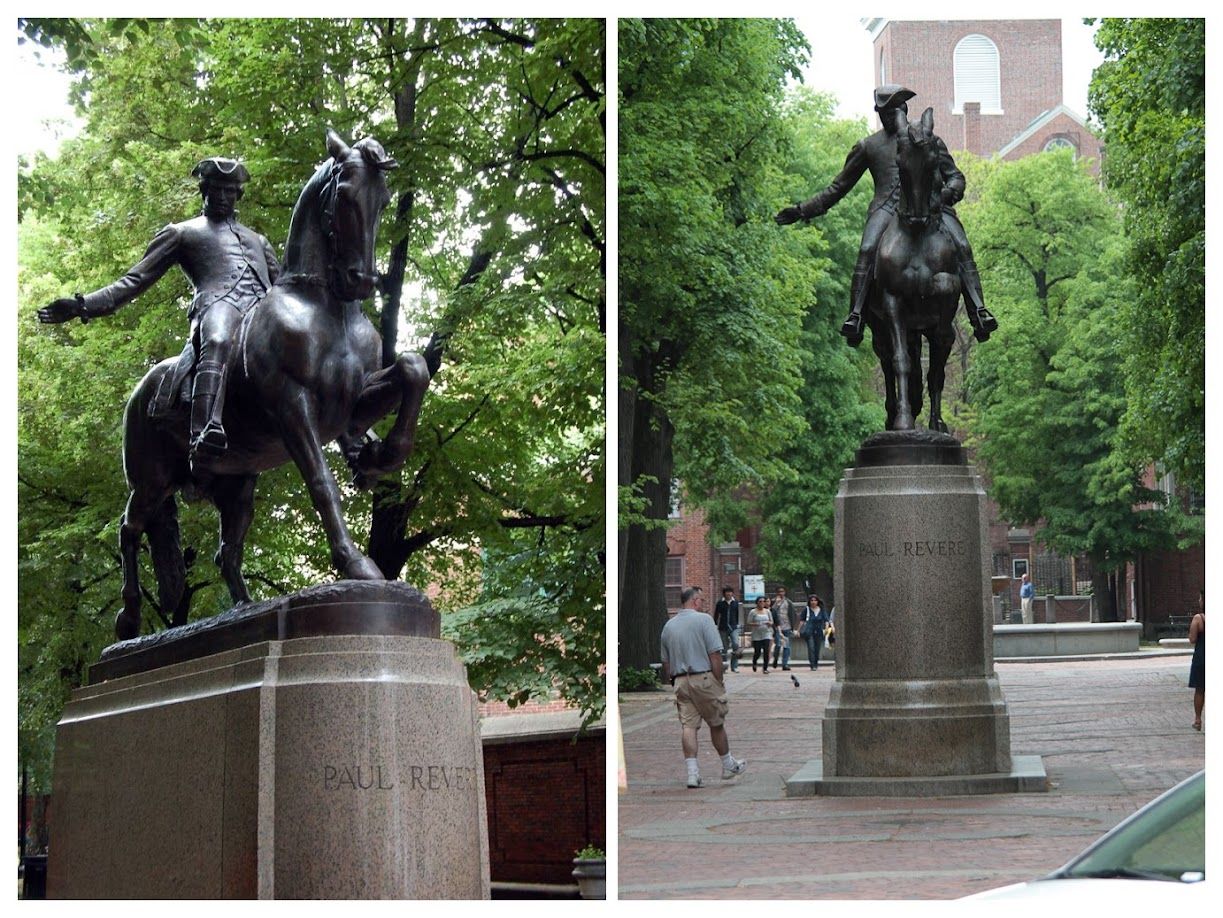
Dallin converted to Unitarianism and initially turned down the offer to sculpt the angel Moroni for the spire of the LDS Church's Salt Lake Temple. He later accepted the commission and, after finishing the statue said, "My angel Moroni brought me nearer to God than anything I ever did." His statue became a symbol for the LDS Church and was the model for other angel Moroni statues on the spires of LDS Church temples.2
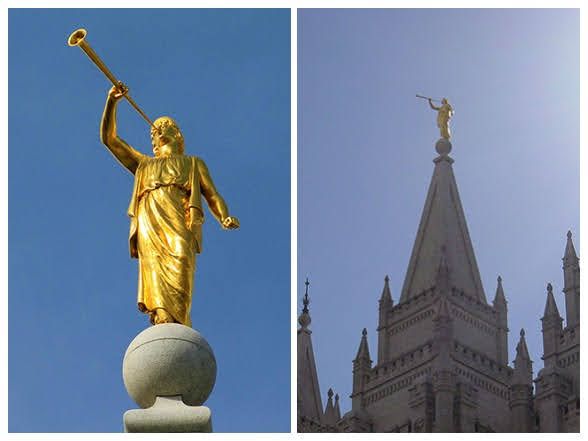
Dallin created four prominent equestrian sculptures of indigenous people: A Signal of Peace, or The Welcome (1890); The Medicine Man, or The Warning (1899); Protest of the Sioux, or The Defiance (1904); and Appeal to the Great Spirit (1908).2
These were all shown in yesterday's post except for the Protest of the Sioux -the full-size staff version of Protest of the Sioux was exhibited at the 1904 Louisiana Purchase Exposition, where it won a gold medal. The mounted brave defiantly shaking his fist at an enemy was never cast as a full-size bronze and survives only in statuette form. A one-third-size bronze version, cast in 1986, is at the Springville Museum of Art in Springville, Utah.2
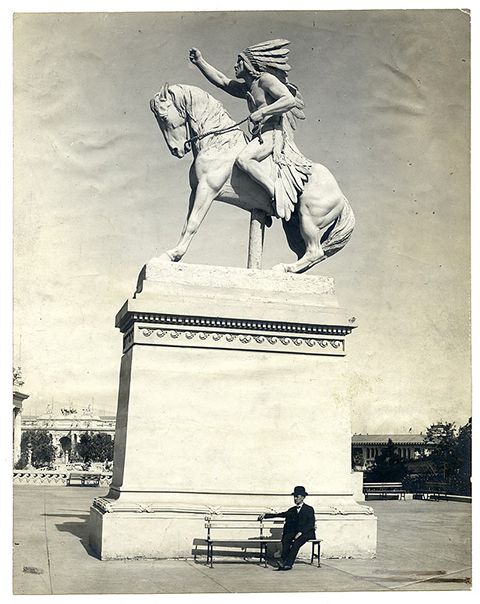
Dallin also created statues in recogniton and memory of those involved in the European settlement of America. His Signing the Mayflower Compact (1921), Provincetown, Massachusetts (below right) is a stunning bas-relief work of art commemorating the first document in the New World to establish self government.

The Memorial to the Pioneer Mothers of Springville (1932), Springville, Utah (as shown above left) is also quite beautiful and demonstrates Dallin's wonderful ability to capture facial expression.
But his war memorials in recognition of the sacrifice involved in the American Civil War are amongst my favourites.
The Soldiers and Sailors Monument (1908–1911) is a Beaux-Arts monument in Syracuse, New York, dedicated to the 12,265 men of Onondaga County who served in the Civil War. It was designed by architect Clarence Blackall and includes two bronze sculptures, The Call to Arms and An Incident at Gettysburg by Cyrus Dallin. The memorial was erected in Clinton Square, alongside the Erie Canal. 2
The monument consists of a square granite pylon with attached Roman Ionic columns at its corners, supporting a heavy cornice with a carved frieze, and crowned by a globe guarded by four eagles grasping a thick garland. This is set atop a plinth, and a stepped plaza with corner piers supporting bronze lampposts. The pylon's east and west sides are adorned with bronze high-relief sculpture groups by Dallin. The north and south sides feature granite reliefs of flags and military accoutrements. The plinth features dedication plaques, and a quotation from President Abraham Lincoln's Gettysburg Address. The monument is approximately 75 ft (22.86 m) tall.2
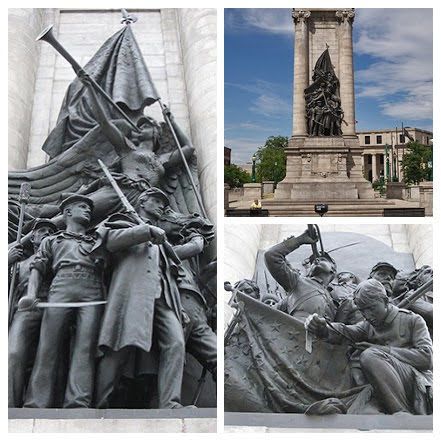
Dallin won a design competition to produce the two monumental bronze groups, The Call to Arms and An Incident at Gettysburg. The competition's judges included J. Q. A. Ward and Daniel Chester French.2
In the Call to Arms (above centre) a full length, bronze statue of a woman is centered against a Roman Doric architectural backdrop. Eight feet tall and draped in a flowing hood and robes, the woman holds her right hand to her cheek while her left arm encircles the helmet of a fallen hero. The helmet is wreathed with a chaplet of laurel. Her downcast face is "in an attitude of pensive remembrance". The graceful curving lines of this statue contrast with the rigidity of its granite architectural setting. On either side of the statue bronze tablets have been set into the stonework which bear the names of the honored dead of five wars. This memorial is built upon a foundation of concrete and stone - it measures 30 by 20 feet.3
The Incident at Gettysburg group (above right) depicts the moment when a Syracuse native, Color Sergeant William C. Lilly of the 149th New York Infantry, paused in the middle of a firefight to repair a broken flagstaff with his belt. Lilly survived Gettysburg but was killed in a later engagement in the War.2
Two other war memorials by Dallin are Memory (below left) and Woburn Return of the Troops (below right).
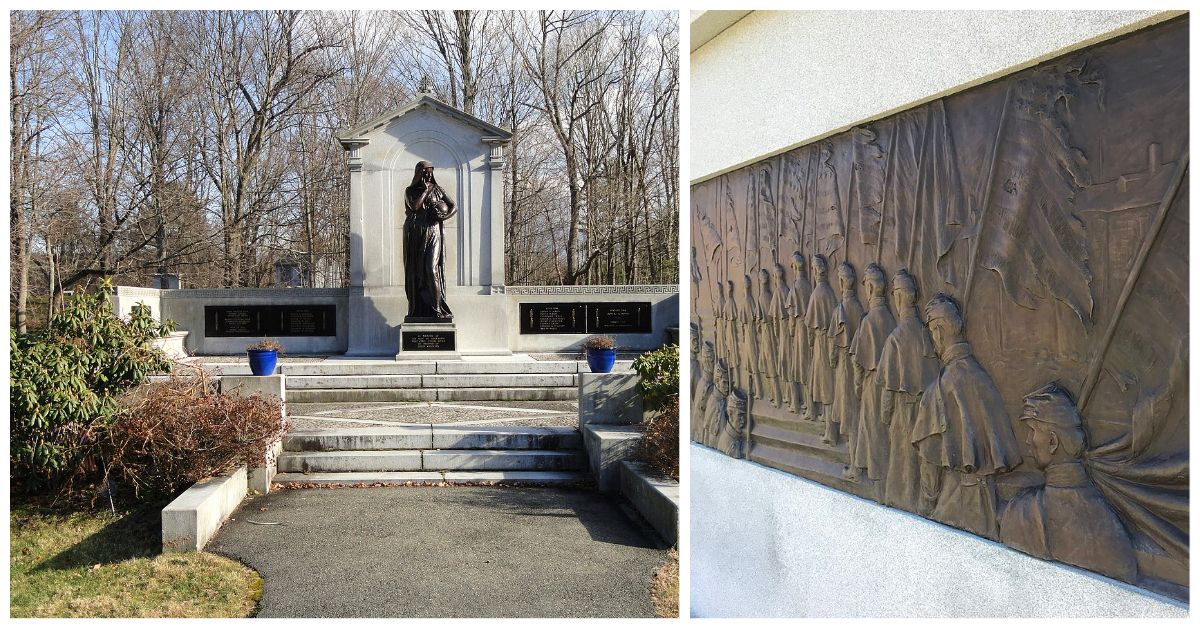
The Memory statue was erected to memorialize Sherborn citizens who gave their lives for their country in five wars between 1676 and 1918. Its 1924 dedication coincided with the 250th anniversary of Sherborn's incorporation. It was given to the town by William B. H. Dowse, a successful lawyer, businessman and philanthropist.3 The bronze figure holds a wreathed battle helmet and stands before a granite pillar engraved with names of the dead.
Woburn Return of the Troops is a bas-relief plaque showing soldiers returning from the US Civil War possibly ascending the steps of the Massachusetts Statehouse. Dallin included a self-portrait in the lower left. While it honors the soldiers, it also is a reminder of the cost of war as seen in the fatigued stance of the returning soldiers.2
For a list of sculptures created by Cyrus Dallin please click here.
Dallin died at his home in Arlington on November 14, 1944, a week shy of his 83rd birthday. He will be remembered as a person who valued truth and justice and for pioneering the role of the artist as an agent of social change.1
You can check out the Cyrus Dallin Art Museum in depth by following the bookmark links below - the second link includes a virtual tour of the museum.
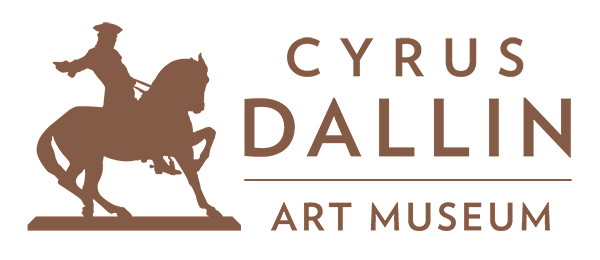

Facebook members can also check out the Cyrus Dallin Art Museum FB page by clicking here.
Credits
1. dallin.org
2. en.wikipedia.org
3. sherbornma.org

